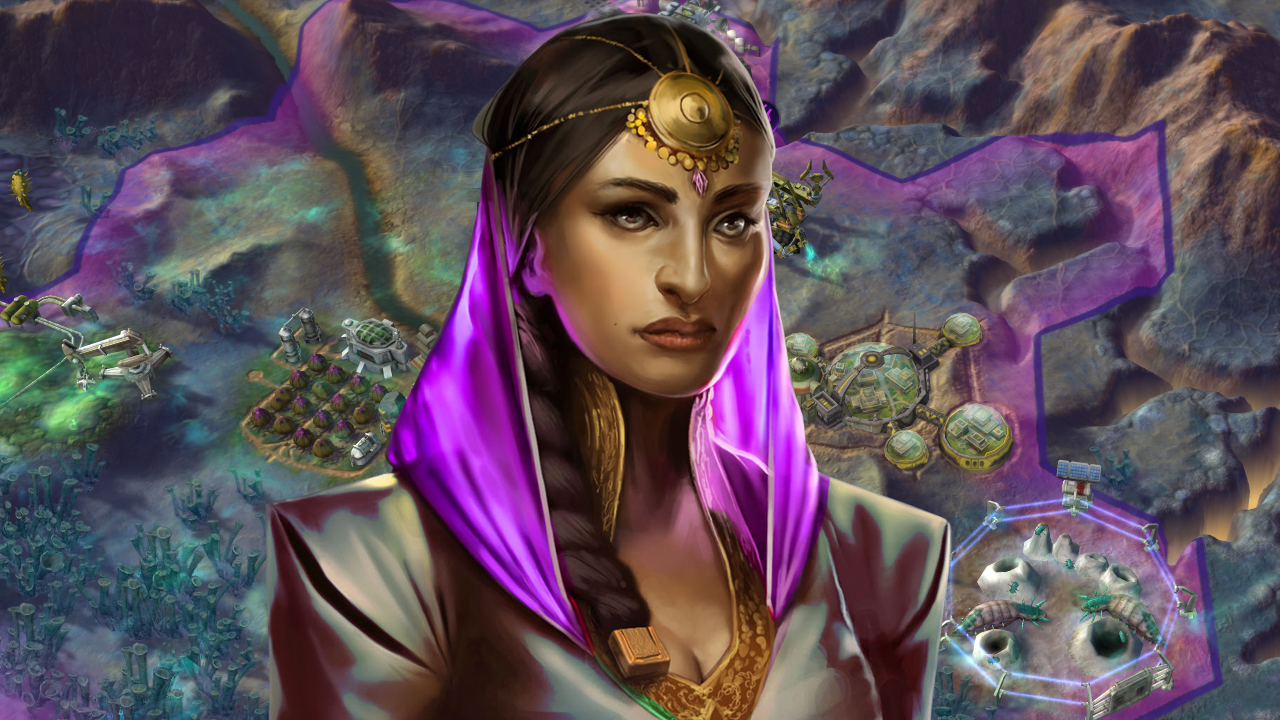

The supremacy affinity is all about transhumanism, turning your society into a fearsome, militaristic technocracy. These affinities allow you to dominate your environment in one of three distinct ways. That variety comes in the form of the game's new affinity system. There's a genuine sense of wonder that comes from exploring these harsh, alien environments, and a decent amount of variety to how you approach them. The early game becomes a matter of figuring out the best ways to navigate around the more hostile aspects of the environment until you've researched enough technologies to start overcoming them, and this is by far the most exciting part of the game. Yet they were also generally non-threatening, unless I happened to wander too close to their teeming nests. I also realized that alien creatures were numerous in ways that the barbarians of old never, ever were. I discovered that numerous areas of the map were coated in a noxious alien miasma, and that taking units through it would damage them. But then, little wrinkles started to show up. Like always, I sent out a scout (explorer) to start looking for ruins (in this case, a mixture of "resource pods," alien remains, and ancient alien ruins) and barbarian encampments (alien nests), began work on my first cultural monument (earth relic), and began researching my first technologies.
#Sid meier civilization beyond earth wiki how to#
Jumping into my first game, I had no trouble at all figuring out how to start progressing my new colony. The nuts and bolts of Beyond Earth's basic UI, pacing, and visual design all feel in lockstep with what Civ V offered. Given that familiar feeling, it's tempting to call Beyond Earth a gussied-up expansion pack for Civ V. Civilization shifts away from its historical roots into the far-flung future in Beyond Earth. But if you're the sort that spent countless, sleep-deprived hours building society after society in Civ V, you'll likely encounter the same creeping feeling of over-familiarity that I did. Sure, victory conditions have changed, the roles of culture, diplomacy, and espionage have shifted, and Civ V sure as hell didn't have giant worms roaming across any of its un-modded landscapes. And you'll do all of this using roughly the same design structure as Civilization V. Alongside rival Civs, you'll expand your initially meager settlement into a bustling society with radical new technologies, all the while forming a relationship with the world you've settled that can range from harmonious to actively antagonistic. Instead of guiding the many noteworthy cultures of Earth's past, you're sending the last remnants of humanity into the vast, uncharted nether of space to colonize an alien world.
#Sid meier civilization beyond earth wiki series#
The Affinity system is expanded so that players can "mix" two affinities to create a hybrid of the two, allowing access to new units, and giving players greater freedom while playing.After three years of expansions and patches to Civilization V, Firaxis has moved its venerable strategy series off-world in Civilization: Beyond Earth. The diplomacy system goes through a major overhaul, to make the system match the unit nature of sponsors, rather than treat them as civilizations you, as a player, know about. New naval units also complement this expansion to gameplay. In changes similar to those introduced by Sid Meier's Alien Crossfire to Sid Meier's Alpha Centauri, Rising Tide allows players to build and defend cities built on Ocean tiles. The factions are the middle-eastern faction called Al Falah, German INTEGR, North Sea Alliance, and Korean Chungsu. These new sponsors were 'late' to the seeding process, and offer a different perspective to the existing sponsors. This expansion features four new playable sponsors.

The expansion overhauls many parts of the game, as well as introduces new playable sponsors.


 0 kommentar(er)
0 kommentar(er)
